Thanks for your support! If you make a purchase using our links in this article, we may make a commission. And, as an Amazon Associate, I earn from qualifying purchases. See the full disclosure here.
Wondering if a motorcoach is right for you, or should you avoid drivable motorhomes altogether? Motorhomes are perfect for some people, but there’s no one-size-fits-all RV for everyone.
What makes a dream RV for one person might be one you never want to step foot in, and that’s perfectly okay. When it comes to RVs, towables, and drivables each has its own pros and cons.
The only way to know what will work best for you is to do your research (like this article) and tour some RVs. You may find that avoiding drivable motorhomes and choosing a towable RV is your best option.
10 Reasons You Might Want to Avoid a Drivable Motorhome
If you’re still debating which type of RV you want to get for yourself, we put together the 10 top reasons a motorhome might not be the best choice for you.
Motorhomes are not “bad”, and none of these reasons are disastrous. However, they do speak to personal preferences and individual needs when it comes to RV type and style.
Let’s take a closer look.
1. Motorhomes Have Less Floor Plan Variety


Motorhomes have fewer options for floor plans than other RVs. It’s true that you still have some variety but there isn’t much variation when your rig is on a drivable chassis.
Towable RVs have a lot more floor plan options because they don’t have to worry about a cab and automotive components. In general, most motorhomes will have a bedroom and bathroom at the rear, a kitchen in the middle, and a living area in the front.
There’s only so much RV engineers can do when designing a motorhome’s interior layout. You may find motorhomes with the kitchen on one side or the other, or a different type of countertop layout.
Additionally, you can choose a master bed that’s positioned in an east/west or north/south configuration. Additional variations might include the type of dinette, the type of sofa or theater seating, and the positioning of the TV.
And some motorhomes may have more or less slide-outs than others to provide more floor space. But that’s as far as it goes as far as floor plan variety.
2. Motorhomes Have Less Privacy for Families

Another to avoid drivable motorhomes is if you have a family who loves their privacy.
Towables have many options for RVs with multiple bedrooms. However, in motorhomes, that’s really hard to find. There are motorhomes with bunks, but usually, the bunks are located on a slide-out and aren’t really their own “room”.
Class A motorhomes have a bed that lowers from the driver’s area ceiling. But, again, there’s little privacy here. Your best bet for a true private separate bedroom in a motorhome is to find a toy hauler motorhome and convert the garage space.
Towables, on the other hand, can offer multiple bedrooms, that come with more than one bed and storage options.
3. Driving a Motorcoach Can Feel Intimidating
Driving a motorhome can feel intimidating, especially if it’s your first time. Although modern motorhomes have many bells and whistles to make the driving experience comfortable and efficient, driving one isn’t for everybody.
Class B motorhomes offer the most “car-like” driving experience, due to the vehicle being built from a full-size van. However, if you truly want the comfort of riding in your own vehicle, a towable might be a better option for you.
4. Your Engine and Your Camper Are All-In-One
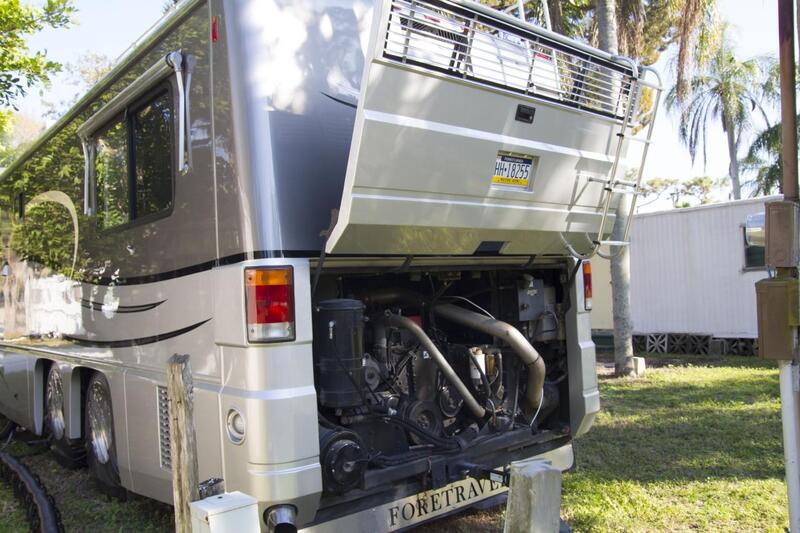
Having your engine and your camper all-in-one can be a downside for many people.
The reason this is a downside is that if your RV engine needs to go to the shop for repairs, you can’t go camping. And this problem is even bigger if you plan to live in your RV full time. You could be without your RV for days, weeks, or even months.
Additionally, it can be incredibly difficult to find a repair shop for a large motorhome if something happens to you in a remote area. However, if you’re traveling with a towable RV and something happens to your vehicle, it will be a lot easier (and faster) for you to find a repair shop and get it repaired.
5. Motorhomes Are More Expensive Than Towables
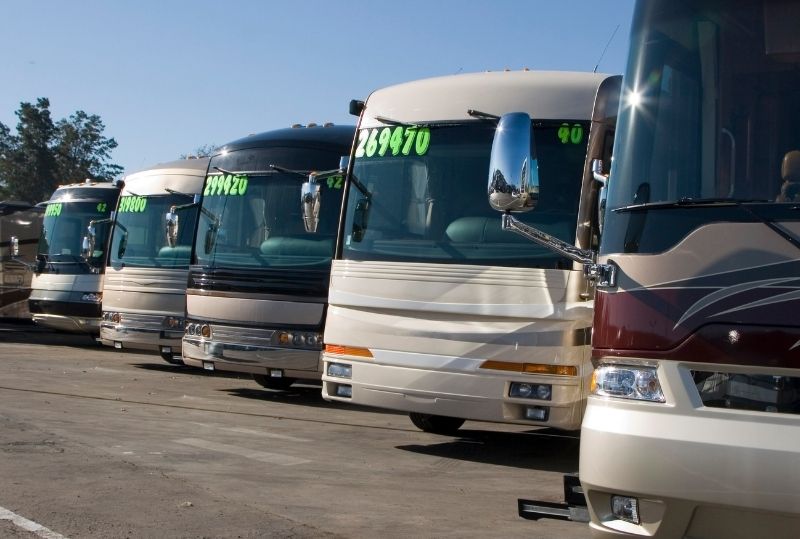
Is price a factor for you? If so, it’s important to note that motorhomes are significantly more expensive than towable RVs. The price difference can make you avoid drivable motorhomes from a budget standpoint.
The price difference makes sense, but it doesn’t make it any easier to stomach. Motorhomes are both a camper and a vehicle all-in-one. This means they’re more expensive to produce, which makes them more expensive to purchase.
The average cost for a Class A motorhome ranges from $70,000 on the low end, to $3 million or more on the high end.
Alternatively, the average prices for a fifth wheel range between $35,000 to $300,000.
While that’s a pretty steep price difference, you’ll have to factor in the cost of a heavy-duty truck if you end up choosing a fifth wheel. When you include the price of a 150/1500, 250/2500, 350/3500, or larger pickup truck, you’ll still save money on a fifth wheel compared to many mid-level and luxury motorhomes.
6. Less Interior Storage in a Motorhome
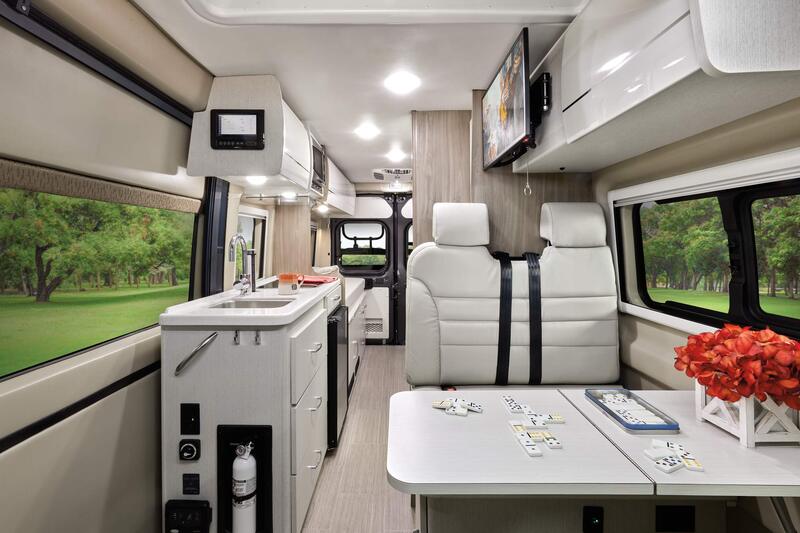
If you need a lot of interior storage, you should know that motorhomes typically have less interior storage than towables. When you compare a motorhome to a fifth-wheel RV, the fiver has the most interior storage by far.
Since there isn’t as much variety with floorplans, motorhome manufacturers are somewhat limited on how many cabinets they can include inside the RV. However, most motorhomes have ample storage for most people’s needs.
You just can’t bring along your entire wardrobe or your whole kitchen’s cooking arsenal.
Class A motorhomes have the most storage out of all the drivable RVs. Class C’s have less than Class A’s, and Class B RVs have the least amount of interior storage out of all drivable RV types.
7. The Interior Can Feel Less Home-Like
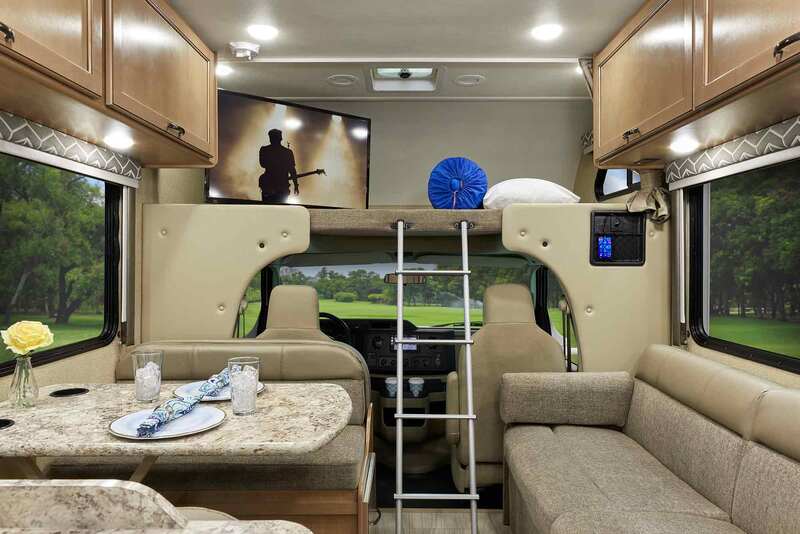
Do you want an RV that feels like a true home on wheels? If so, avoid a drivable motorhome and choose one of the many towables available.
Motorhomes feel less residential than fifth wheels or travel trailers. This, again, is because of the floor plan variety (or lack thereof).
Fifth wheels and travel trailers can feel very much like a residential home with multiple levels, more than one bedroom, and two spacious bathrooms. Each room can feel totally separate from one another in a towable RV.
However, motorhomes have a very open-concept feel with the kitchen and living area combined. Additionally, the bathroom and bedroom areas are somewhat combined in a motorhome. Often, Class A motorhomes with midship bathrooms can feel tight even if they include a shower. This is another reason you may want to avoid drivable motorhomes.
8. Drivable RVs Can Be Harder to Heat or Cool
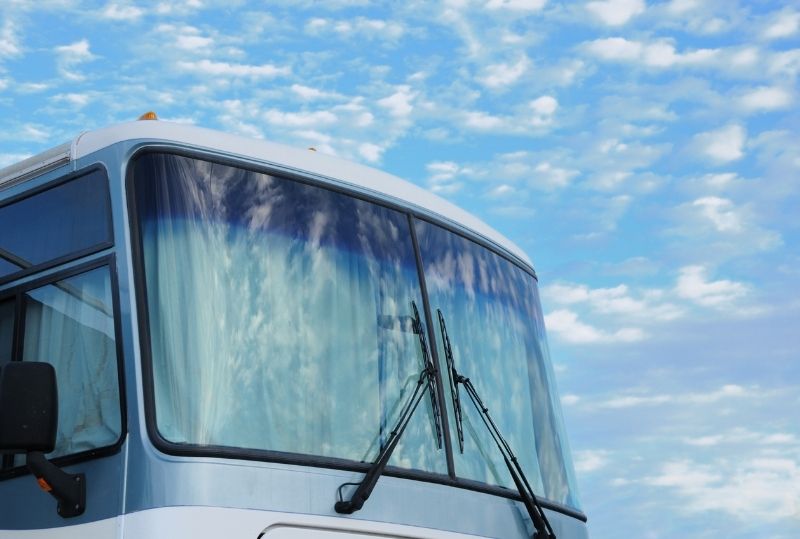
It can be hard to regulate the temperature in a motorhome. And, if you’re staying at a campground where you have to pay for utilities (as a full-timer), it can ultimately cost you more money.
The large panoramic windshield in a Class A motorhome is great for the view and natural light. But you know what they’re not great for? Insulation.
The windshield and the side windows have almost no insulation value, so you’ll lose a lot of heat in the cab in the winter.
And in the summer, those huge windows can act as a magnifying glass for the heat of the sun, even with curtains. You can purchase exterior windshield covers or radiant sheeting to help keep it cool. Still, you won’t have the same amount of insulation as if you didn’t have the windshield at all.
9. Front-Engine Motorhomes Can Be Loud
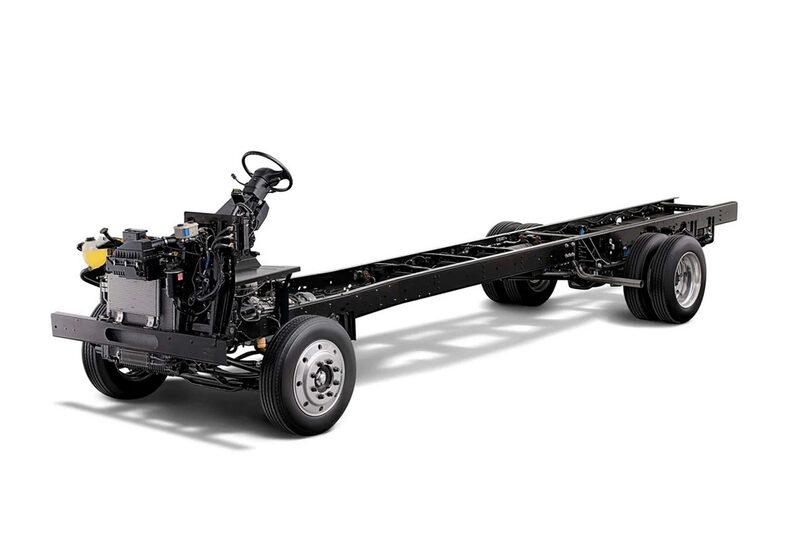
Have you ever ridden in a drivable motorhome before? One surprise about a motorhome for many new RVers is just how loud it can be when underway.
Some older front-engine motorhomes are very loud while in operation. It can be hard to have a conversation when you have to yell over the engine and road noise.
Some motorhomes have an engine in the back (diesel pushers), and this provides a more audibly appealing ride. However, if a diesel pusher is out of your budget, can you handle the noise of a front-engine gasser or diesel motorhome?
10. Motorhomes Have the Lowest MPG
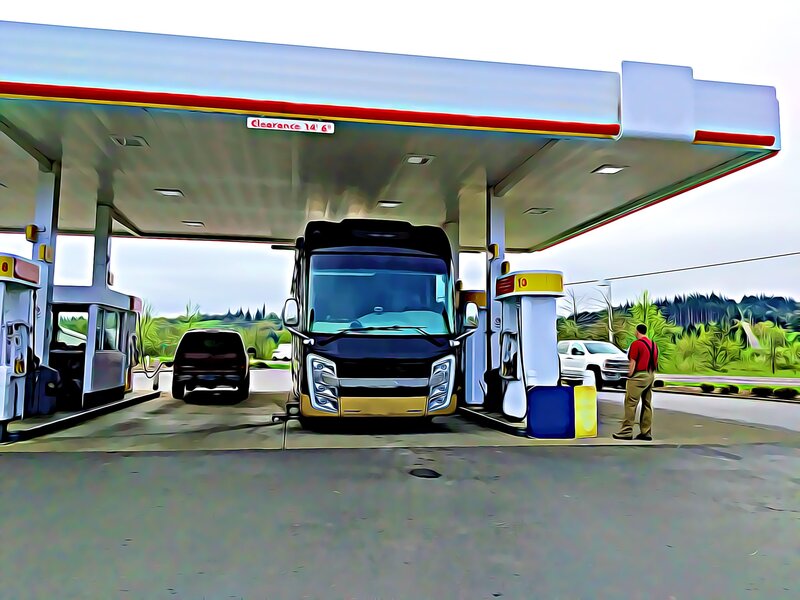
Last but not least is fuel efficiency. There’s no doubt about it; motorhomes consume a lot of fuel, they get the lowest MPG, and filling them up isn’t cheap!
At best, smaller drivable motorhomes can get up to 14 or 15 miles per gallon. At worst, the big motorhomes have a city fuel efficiency average of 7-9 MPG or less. Ouch.
Motorhomes are very large, very heavy, and that fact is reflected in the amount of gas they use getting from Point A to Point B. It’s even worse if you’re traveling against the wind or with full holding tanks.
While fuel economy when towing a travel trailer or 5th wheel is lower than your vehicle would normally get, it’s typically better than what you’d experience in a motorhome. Avoiding drivable motorhomes area good way to achieve better fuel efficiency when RVing.
Motorhomes Have Plenty of Benefits, Too
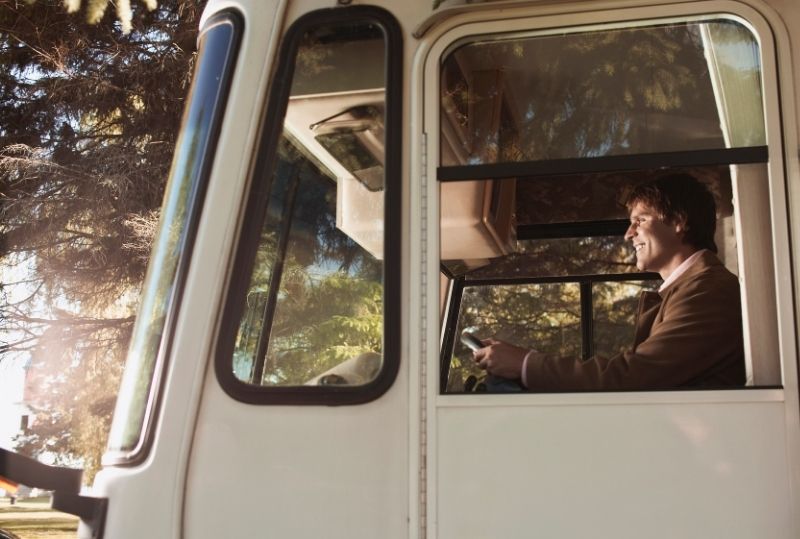
Although motorhomes might not be the best RV option for every RVer, they still have plenty of benefits.
Motorhomes are great for things like tailgating. And they are also great for couples or families who want an RV for weekend trips. Additionally, motorhomes feel open, spacious, and provide the best view of the road compared to any RV type.
When trying to pick the best RV type, it ultimately comes down to personal preference. No RV type is “better” than any other RV, although RV class enthusiasts might disagree.
Should You Avoid Drivable Motorhomes or Go for It?
Is a motorhome for you? If you have a smaller budget or need an RV with separate bedrooms, plenty of storage, and a specific floor plan, then probably not.
However, if you love the feeling of a motorhome interior, enjoy the panoramic view while traveling, and want the experience of being able to park and move into your living area seamlessly, then maybe a motorhome is right up your alley.
1. Fifth Wheel vs Class A Motorhome: How to Choose
2. What Are RV Classes? All Types and Styles Explained
3. What’s the Difference Between a Motorhome RV and a Camper?
4. Class C vs Travel Trailer
5. Class C RV vs Fifth Wheel: Which is Better?
About the Author
Carrie Wilder is a part-time van lifer, full-time nomadic lifestyle enthusiast, and the advertising and SEO Manager at Escapees RV Club.
When she’s not camping or working, you can find her writing about her favorite marketing tips on her website, The World Wild Web, or befriending the nearest cat.


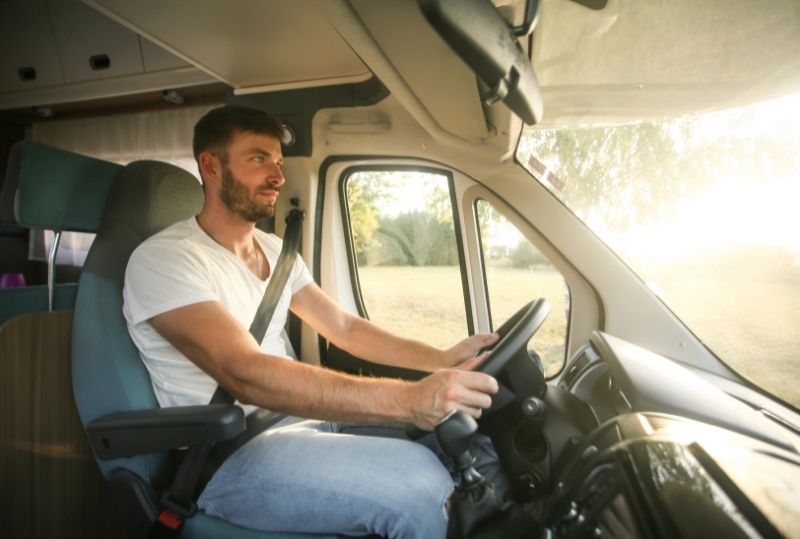
I started looking in 2013 after retiring. I knew Ford pickup trucks, vans, 30′ stake body trucks, Ford F350, 450 and 550 brush fire trucks after 35 years in fire fighting. I found my current 2005 Ford E450 Class C 30′ Four Winds motorhome through a repo dealer for $25,000, with 28,000 miles. It had an original sticker price on a cabinet for $78,000. That price included, tax, title, license, 1 year warranty and six new tires. We currently have 95,000 miles on it and have replaced the brakes, tires, front shocks, water heater and kitchen sink faucet. My wife wants a new Thor Vegas. I am happy with our current rig, as I can still maintain it and have even changed several flat tires on the side of the road. I believe in the Class C because you have a proven truck chassis with a separate coach box mounted on the heavy duty frame. I believe it will last another 100,000 miles, as the rental companies use the same model and sell them to the public at 175,000 miles.
Hi Mike,
Stick with what you know!
Thanks for your input.
Mike
Got a “B” the wife and I, perfect, love it.
Awesome! Thanks for sharing!
Mike